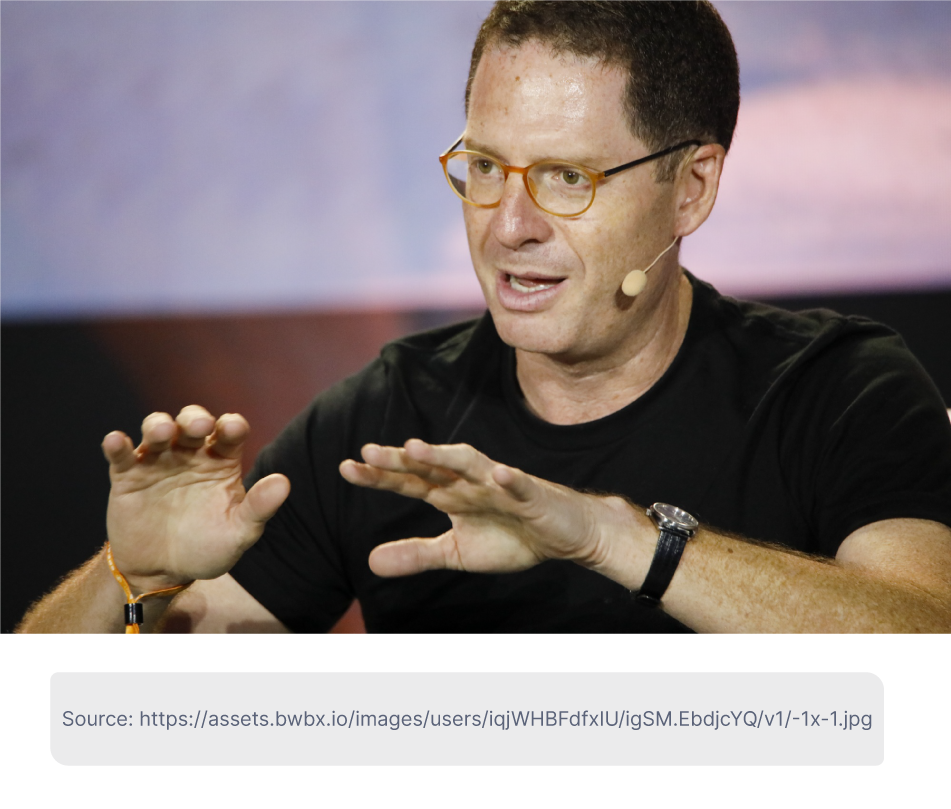Web 3.0. What is it? And Should I Care?

Web 3.0 is coming. Have you heard of it?
But fear not: Web 3.0 isn’t a new kind of internet that involves alternative reality glasses or plugging our brains directly into a mainframe computer a la The Matrix. Not at all. (That’s the metaverse; check back later for an article on that!). In a way, Web 3.0 is the opposite: it’s a hopeful and positive new internet, one that takes power away from the Big Guys (Netflix, Google, Facebook, etc) and gives it back to us: the everyday users!
Doesn’t sound so scary now, does it?
Well, let’s dig in and see. But first: what came before Web 3.0 -- and what makes it different from the Web 2.0 that we’re using right now?
What was Web 1.0?
Perhaps you remember the early days of the internet. The first iteration. Version 1.0. You will, if you’re over a certain age. If you’re not, let Brain Brooks, CEO of Bitfury, summarize it for you the way he did in front of the US Congress in December 2021:
“If people remember their original AOL account, it was an ability to look in a curated ‘walled garden’ at a set of content that was not interactive, but was presented to you on AOL, the way that Time Magazine used to show you the articles they wanted you to see inside of their magazine, just you could see it on a screen.”

In simple terms, Web 1.0, the “original internet” was an online digital presentation of content much like a digitally curated magazine. Executives working for AOL and other internet providers created content and subscribers accessed this content. Granted, in addition to these Big Company providers, individuals who were tech-savvy or who had access to servers, blogs, HTML, etc., could create, host, and publish their own content as well. It just took a lot of technical expertise and a good bit of access. Often, these web properties were rudimentary and non-interactive: they were also like digital magazines or digitally published content. They were just more like your friends' online Zine, or a local newspaper, rather than a big glossy magazine.
But it was upon this that Web 2.0 was born -- the web as we know it today. It was on this more open web that early creators built some level of interaction: think Craigslist, Blogspot, Tumblr.
-png.png)
In Web 2.0 individuals with interest could interact with the internet for the first time. They could open a blog account, or host a WordPress blog within their own website, and publish content. Or, if they didn’t feel like hosting their own work, they could use a site published by Tumblr (or another company) to run a simple blog that friends, relatives, strangers, could find and access easily.
It was upon this frame that Myspace, Facebook, Twitter, and other Social media companies began to build their early sites. Why use Tumblr to publish into the anonymous void, when you could publish “micro-blogs” on Twitter and easily attract readers and followers, or on Facebook, where your status could easily be linked to and consumed by all of your friends (and your Aunt Gladys too, eventually)?
Pretty soon, however, as these companies grew, ate each other up, and became more dominant market players (with massive infrastructures -- and incomes -- of their own) the “open and accessible” Web 2.0 became just as walled-off and just as dominated by Big Guys as the original Web 1.0 was. Consumers began to realize that companies like Google, Facebook, and others had been mining data for years, and that from this data they had built billion dollar empires and grabbed onto the wealth, commerce, and informational potential of the internet with a vice grip.
And that’s where we are today. Stuck in that grip -- for now -- with very few solutions on how to wiggle out of it.
Enter Web 3.0
In short, Web 1.0 and 2.0 were corporate owned, and Web 3.0 is decentralized and “investor-owned.”
But who are these investors and how is it decentralized?
Simple answer: blockchain.
The blockchain, for those following along at home, is a system of defining ownership online using automatically generated, decentralized code. Blockchain is the foundation for Bitcoin, NFTS, and all cryptocurrencies, because it allows users to become owners without a third-party authority (i.e. creating and owning currency without a nation or bank). The lack of third-party authority (often called “trustless”) adds a layer of security: the software itself dictates who has permission to make changes, regardless of who “owns” the server upon which the information resides. This means, ideally, the power will no longer reside in the hands of those who own the most computing power, but rather in whoever has invested in that digital code.
It is within this framework that contemporary practitioners are postulating that Web 3.0 will (and already to a small degree does) exist. Currency like Bitcoin will allow owners and software to be distributed worldwide, so information will be more secure and less walled-in by large corporate powers, and this ownership can be exchanged (bought and sold) using crypto-currency, and without the authority or intervention of governments or traditional banks.
In addition, because of how autonomous and decentralized blockchain can be, it will also allow people to partake in these systems of ownership somewhat anonymously -- so your personal; data cannot be bought and sold as a side effect of your participation (like it is today in WEb 2.0 when you use Facebook or Google…or anything, really).
Web 3.0 -- a solution or a nightmare?
Sounds great, right? A free and open frontier of equal access and secure exchange? Maybe.
Former Twitter CEO, Jack Dorsey, and others warn that there are some risks to the distributed and trustless Web 3.0. As he’s stated: "You don't own web3. The VCs and their LPs do. It will never escape their incentives. It’s ultimately a centralized entity with a different label.” Elon Musk is another Web 2.0 maven who’s questioned its reality and reliability.
-png.png)
Likewise, Blockchain is very energy intensive, and in a world where energy may become as scarce as water, ice, and cool air, it could very quickly become more of a problem than a solution.
Though for now, we’ll have to wait and see!
--
If you want to stay up to date with all the new content we publish on our blog, share your email and hit the subscribe button.
Also, feel free to browse through the other sections of the blog where you can find many other amazing articles on: Programming, IT, Outsourcing, and even Management.

With over +16 years of experience in the technology and software industry and +12 of those years at Jobsity, Santi has performed a variety of roles including UX/UI web designer, senior front-end developer, technical project manager, and account manager. Wearing all of these hats has provided him with a wide range of expertise and the ability to manage teams, create solutions, and understand industry needs. At present, he runs the Operations Department at Jobsity, creating a high-level strategy for the company's success and leading a team of more than 400 professionals in their work on major projects.